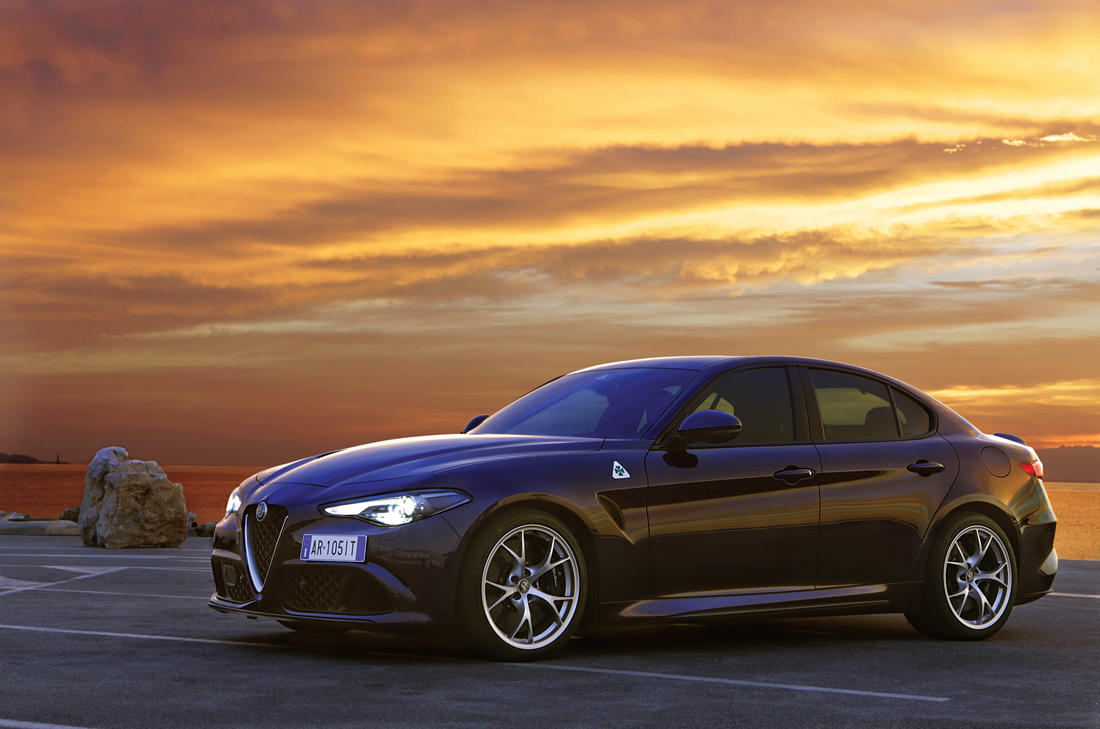
Arguably, Alfa Romeo is the most likely of all carmakers to give those petrol-headedly inclined a faraway, dewy-eyed look. Long before such upstarts as Ferrari and Lamborghini stole the limelight, it was Alfa that proudly bore the standard for Italian motoring. And with good reason. Both before and after the war, its racers won grand prix after grand prix, while its road cars were the conveyances of choice for the wealthy European elite.
Fortunately for the company, its still attracts a hardcore fan base of road-going romantics, all prepared to support its products despite their questionable quality over recent years. Now part of the FIAT empire, the famous Alfa badge has all too often found its way onto the front of some decidedly average machinery, sharing chassis and front-wheel drive layouts with horrible hatchbacks and slow saloons. Even the recent purpose-built Alfa Romeo 4C sports coupe was something of a let down.
Predictably, then, the newest Alfa Rome – the Giulia Quadrifoglio (or ‘Cloverleaf’) – has been greeted with a mixture of high hopes low expectations. It is fair to describe it as the go-fastest version of the company’s compact executive saloon, competing squarely with the triple German juggernauts of the BMW M3, Mercedes C63 and Audi S4.
It does, however, deliver two surprises. The first surprise is it’s good. The second surprise is that it’s actually very good, possibly even better than the Teutonic trio listed above.
The Giulia Quadrifoglio does, however, share a fair amount of componentry with other models in the FIAT family. While you could be forgiven for expecting this to be a bad thing, particularly in terms of prestige and performance, in this instance it’s actually a good thing. Most impressively, the 2.9 litre twin turbo V6 engine tucked under the Giulia Quadrifoglio’s bonnet actually amounts to three quarters of the V8 power plant squeezed into the Ferrari 488.
Predictably, the engine is powerful. Very powerful. Producing 503 brake horsepower at a 6,500 RPM, and up to 440 lb-ft of torque between 2,500 and 5,000, the Giulia Quadrifoglio is capable of sprinting from stop to 62 mph in a jowl-stretching 3.9 seconds. That’s much, much faster than the out-and-out supercars of just a few years ago. With sufficient smooth, straight autrostrada and a number of untypically tolerant carabinieri, a top speed of 191 mph is easily possible.
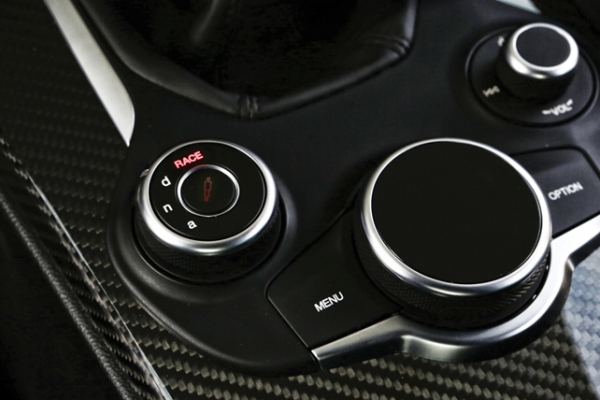
The straight-line speed boasting box is well and truly ticked, matching – or even beating – the Germans when it comes to top-trumps statistics. As any 19th hole barfly will all too quickly point out, however, power is useless without a chassis that can harness it. Fortunately, the Alfa also has this angle covered.
Unlike the company’s recent 156 and 159 saloon models, the Giulia comes complete with a front engine, rear drive layout – again matching the Germans when it comes to handling credentials and delivering power roadwards. What’s more, the car’s weight distribution is not far off a perfect 50/50 balance front to rear, further enhancing its prospects as trackday hero.
At 1525 kg, the Alfa isn’t exactly anorexic. Other high-performance innovations have, however, been adopted in order to keep that mass to a minimum. To this end, racing-chic carbon fibre makes an appearance in both the roof and bonnet panels, while the drive shaft is entirely carbon. This helps to not only reduce overall mass, but also cuts inertia in the drivetrain, ultimately aiding acceleration. Lightweight aluminium is also a feature of the door panels and bumpers, as well as playing a prominent role in its suspension components.
A number of other track-borrowed elements further enhance both the Alfa’s speed and, perhaps more importantly, its appearance of speed. The expected high-performance cues are there of course – gaping front radiator air intakes keeping things cool when the pace gets hot, with dashing slashes to the bonnet and behind the front wheels.
Perhaps the most striking feature, though, is the rear diffuser, seemingly tucked under the rear in a bid to reduce aerodynamic drag and improve down force. While its aerodynamic credentials are unclear, bracketed by two pairs of rakishly inclined exhaust pipes, it certainly makes the Alfa look faster.
Less for show and more for go, though, is the front air splitter, a flourish usually hidden away under the front bumper. When parked, this little high-speed detail is all but invisible, only being deployed forward when the Alfa’s stability control system decides that more front end grip is required (even then, only when the car is moving fast enough for aerodynamics to have a role to play).
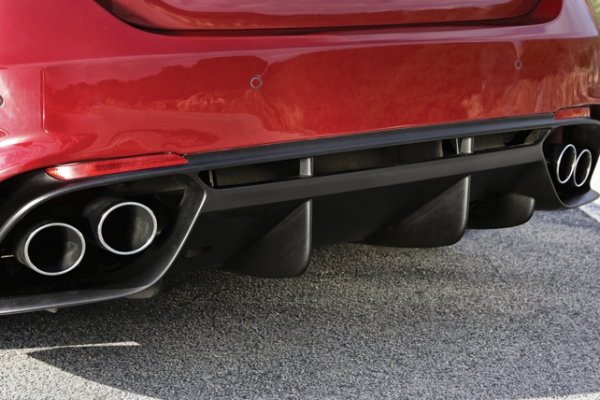
Such attention to detail suggests that the Giulia Quadrifoglio may genuinely be up to the task of beating its rivals for speed, rather than having been merely designed to look that way.
Climbing inside instantly provides further confirmation that this Alfa might actually be the real thing. The deep bucket seats grip and hold the body snugly, although those having overdone it on the tiramisu may find themselves held rather more snugly than they might prefer.
The cabin layout could best be termed business-like, providing the driver with well-space buttons and switches for easy operation on the move. There is also, of course, the obligatory prominent, race-style tachometer and speedometer, fetchingly aligned with all the more interesting numbers right at the top the dial. Refreshingly, its on-board computer interface is easy to use, with the menus and sub menu options flowing intuitively from the central console control wheel.
While efficient, the interior is not without the flourish that you would expect from Italian design, most notably the over-sized crosshair air vents and mini-Alfa grille-shaped pedals. Somewhat in keeping with expectations, while the interior is nicer to look at than the typical Teutonic offers, it’s also somewhat insubstantial, with a number of the panels and switching feeling light and hollow to the touch.
Reassuringly chunky, though, is the muscular steering wheel, solidly flanked by large, solid-feeling column-mounted gear selector paddles. While a six-speed manual gearbox is available in some markets, right hand drive cars come solely with the eight-speed ZF semi automatic unit.
Pressing its steering wheel-mounted start/stop button produces a satisfying raspy snarl from the exhaust, one suggestive of hyperactive menace. The initial getaway from a standing start matches the hostile engine sound, launching a brutal g-force assault on the driver’s internal organs.
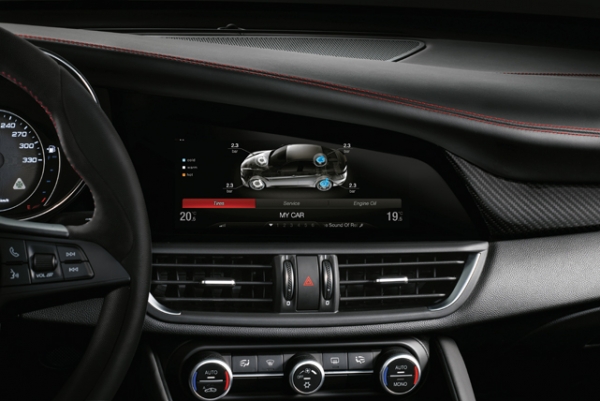
Despite lacking the dual-clutch system of a number of other modern performance cars, snatching the gear change paddle delivers the next ratio in only 100 milliseconds. Shifts are smart, without being savage, allowing near continuous acceleration without sudden shocks to either neck muscles or rear tyres.
Pressing hard on the brake pedal produces even more brutal forces, all courtesy of the optional carbon ceramic discs. Although deceleration forces build progressively, there’s a disappointingly numb sensation in the brakes.
Lack of feeling is, however, not a problem when it comes to the steering, which ably communicates front-tyre grip levels to the fingertips. It’s a quick steering rack, with small hand movements translating into large changes of direction, a conceit that takes but a few moments to get used to before it become instinctive.
Although quick, the steering is far from skittish. The quick action allows the driver to leave both hands on the wheel – racing style – instead of having to feed the steering, arm over arm, even in relatively tight bends.
The Giulia Quadrifoglio comes with a choice of four selectable driving modes, ranging from a full-sleep cruise setting to a distinctly racy configuration. As with most performance cars, the middle two settings provide a quicker throttle response, stiffer suspension and snappier gear changes. One slight disappointment, though, is a lack of sideways power sliding fun, something commensurate with the increasingly brisk driving modes.
Through a combination of independent wheel braking and torque vectoring rear differential, the stability control system ruthlessly exterminates anything so wasteful as wheel spin. This also acts to send power where the tyres can best make use of it, while also slowing wayward wheels.
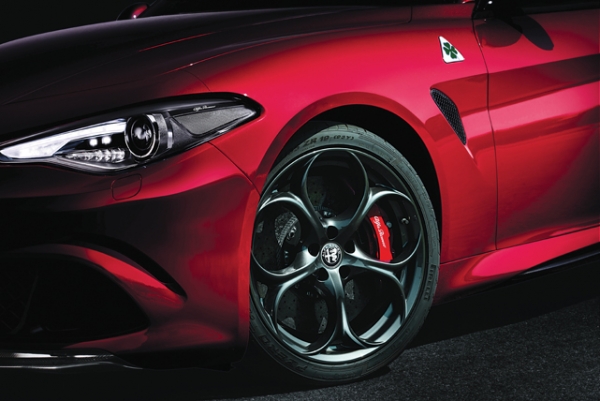
While this zero tolerance approach to flamboyant driving is decidedly un-Italian, it does result in notably rapid progress. That is, at least, until the ‘race’ mode is selected. Rather alarmingly, this sends the stability control programme off for its union mandated two-hour lunch break, leaving the driver with no assistance whatsoever.
Thankfully, transitioning from braking to initial corner turn-in is smooth and controllable, even without the electronic assistance. The even front-to-back weight distribution allows the driver to carry a little brake-lean on the nose as a way of aiding an initial direction change, all without provoking the merest hint of a tail slide.
Pushed to the absolute limit of speed and grip, though, the Giulia Quadrifoglio will eventually understeer. That, however, of easily cured with a moderate lift off the power.
With the fun police banished, the Alfa’s 503 horses are more than happy to oblige when it comes to spinning up the rears with a firm prod of the right pedal on corner exit. Despite its huge power and quick steering, kicking this car sideways isn’t overly scary.
The sensation is one of amiable playfulness, almost as is if this Alfa enjoys a little of the sideways stuff and wants the driver to have his share of the joy. By contrast, it is not difficult to get the impression that certain of its German rivals are on a mission to prove their superiority by looking to catch out inferior drivers and spit them backwards off the tarmac.
Full speed driving in the Alfa is every bit as much fun as it is in any other car in its class – perhaps even more so. The fairly fast driving experience is similarly enjoyable, but does require a degree of preparation.
While the twin turbo V6 is hugely powerful, it can prove a little sleepy lower down the rev range. Flooring the throttle at below 2,000 rpm takes it somewhat off-guard, requiring a few beats to wake the herd for a full-on forwards stampede. Sudden overtakes on single lane roads, then, may well require a few swift tugs on the downshift in order to be safely completed.
Overall, it’s fair to say, though, that the Giulia Quadrifoglio is the car Romeo fans have been waiting for. For a very long time. Now, those sporty driving enthusiasts, who also have the inconvenience of having to transport their family from time to time, no longer have to choose between theirs heart favouring Italian flare, while their head fixates squarely on the innate superiority of all things rear-driven and German.
All said, the Giulia Quadrifoglio is a genuinely excellent driver’s car, one wrapped in all the aesthetic joy and historic pride that Turin can muster. It seems certain that this Alfa will also confer a certain degree of exclusivity, as most fast saloon buyers are still like to opt for the conventional reassurance of a BMW, an Audi or a Mercedes.




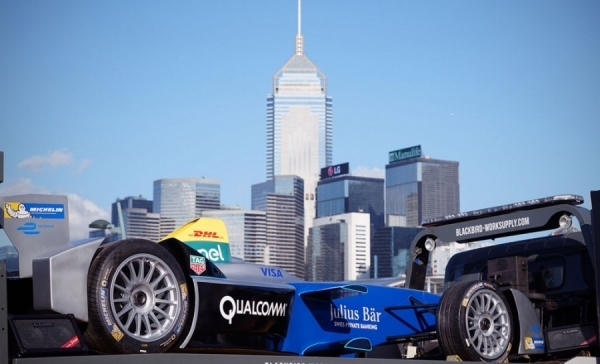
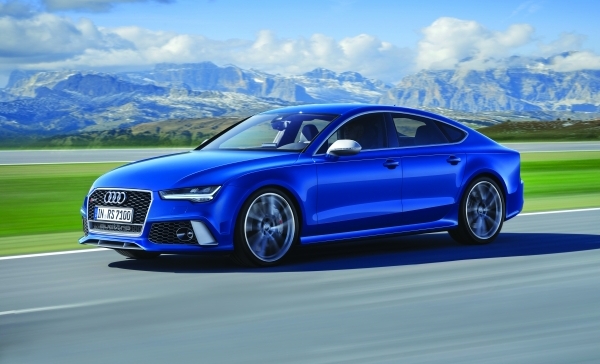



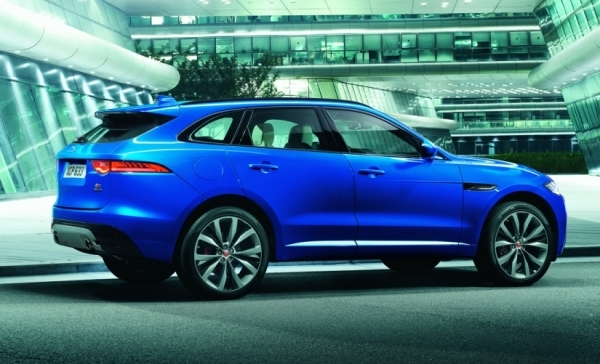




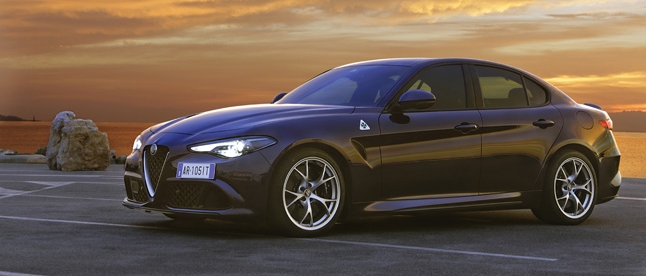











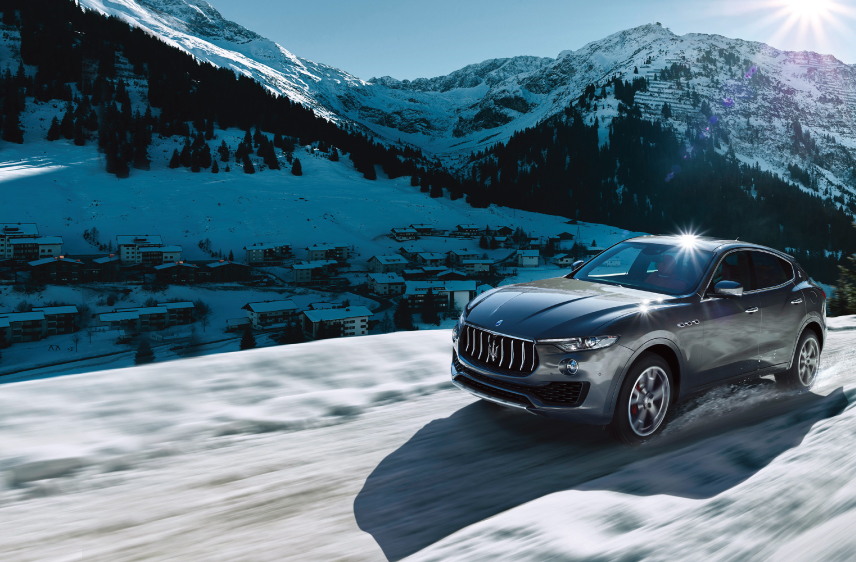















 In many ways, it’s a good thing the gear change prompts are quite so clear, particularly as the 570S has a lot of them to choose from. The McLaren seven-speed semi-automatic dual clutch gearbox comes as standard, aside from full automatic mode, changes are ordered through the large rocker-levers set either side of the chunky steering wheel.
In many ways, it’s a good thing the gear change prompts are quite so clear, particularly as the 570S has a lot of them to choose from. The McLaren seven-speed semi-automatic dual clutch gearbox comes as standard, aside from full automatic mode, changes are ordered through the large rocker-levers set either side of the chunky steering wheel.
